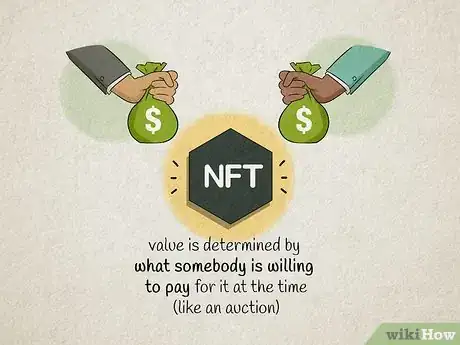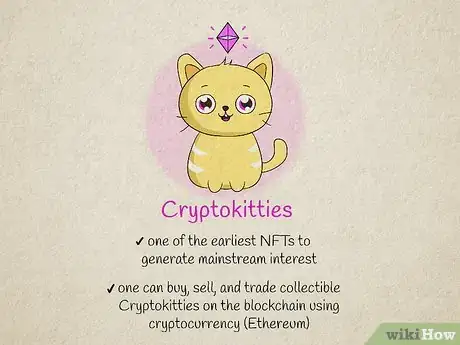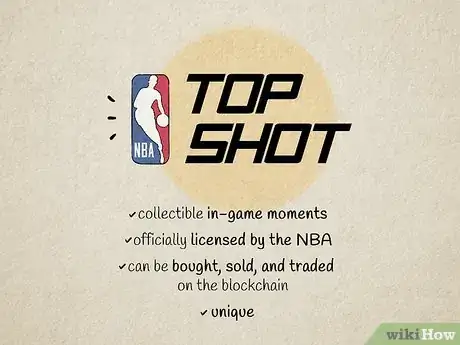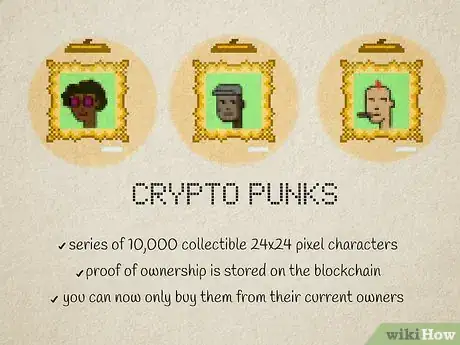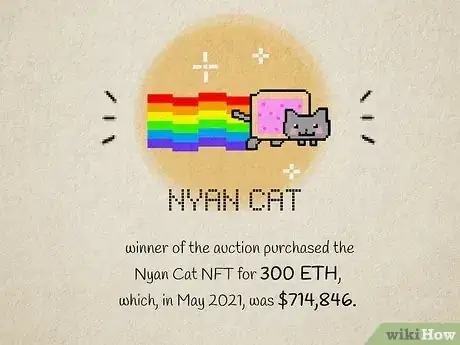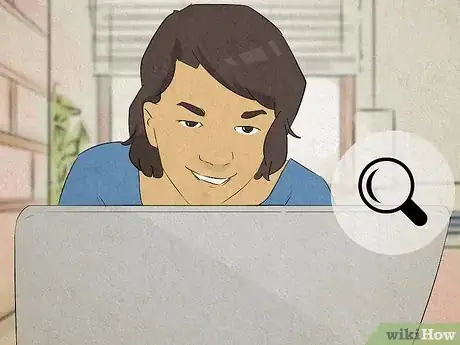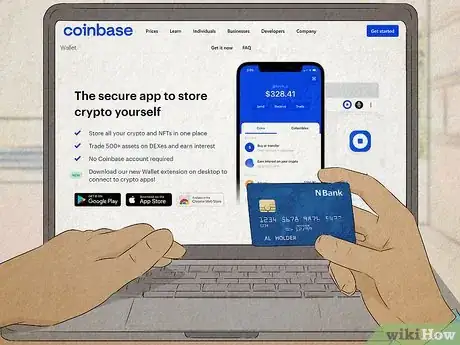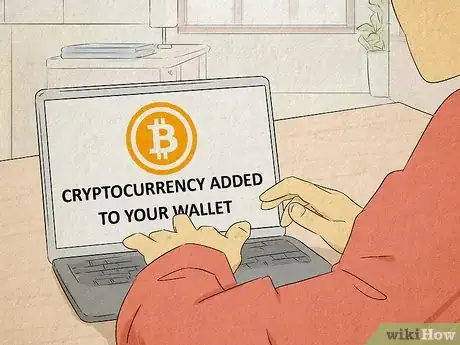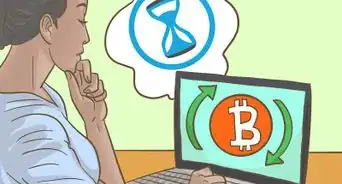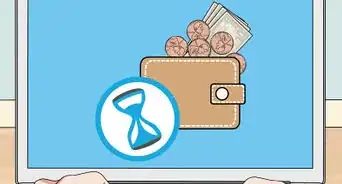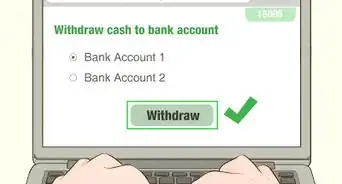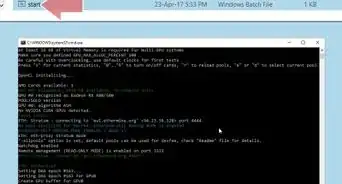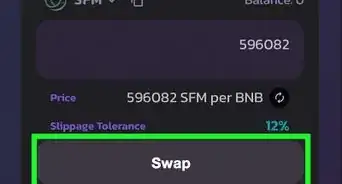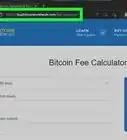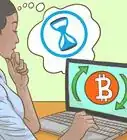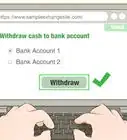This article was written by Gonzalo Martinez and by wikiHow staff writer, Nicole Levine, MFA. Gonzalo Martinez is the President of CleverTech, a tech repair business in San Jose, California founded in 2014. CleverTech LLC specializes in repairing Apple products. CleverTech pursues environmental responsibility by recycling aluminum, display assemblies, and the micro components on motherboards to reuse for future repairs. On average, they save 2 lbs - 3 lbs more electronic waste daily than the average computer repair store.
There are 12 references cited in this article, which can be found at the bottom of the page.
This article has been viewed 20,450 times.
By now you've heard the hype about NFTs. But what exactly is an NFT, and why are they so hard to understand? A non-fungible token (NFT) is a unique, collectible digital asset that exists on a blockchain. A "digital asset" can be anything that can be represented digitally, such as a graphic, music file, in-game item, video, or other item that has its own unique role, function, and value. Unique is the key word here—every NFT is unique, which means some can be quite valuable. That's why you've been hearing about people paying millions of dollars in cryptocurrency for videos and graphics. This wikiHow takes the mystery out of non-fungible tokens.
Steps
How are NFTs different from cryptocurrency?
-
1NFTs are often mentioned in the same breath as cryptocurrencies since they are both on the blockchain. While NFTs are tokens like cryptocurrency, they function differently. The main difference is in the "NF" of "NFT," which stands for "Non-fungible."
- When something is "fungible," like Bitcoin, or even the US dollar, it can be traded for something else of an identical value. For example, let's say you lend your friend a twenty-dollar bill. Because the dollar is fungible, your friend can pay you back with a ten-dollar bill and two five-dollar bills, two ten-dollar bills, or any other bill combination that equals the $20 loan. The same goes for Bitcoin—you can trade $20 worth of Bitcoin for $20 worth of another cryptocurrency, such as Cardano, and still have $20. You can also trade one Bitcoin for another Bitcoin and have the same exact thing.
- Something non-fungible, however, has no exact equivalent. Consider a piece of art, such as the Mona Lisa—while you can purchase a reproduced print of the Mona Lisa, there is only one original. And you can't trade the original Mona Lisa for anything of similar value to get the identical value, as the identical value is the original Mona Lisa. An NFT has individual characteristics that make it unique (different from all other NFTs), just like the Mona Lisa is unique and different from all other paintings. You cannot trade an NFT for something that is identical, or break it into separate assets that can be bought or sold like you can for cryptocurrency tokens.
- You can also think of something non-fungible as another physical item you can own, like a house, a plot of land, a car, or even a trading card. Even though there are many types of houses, cars, diamonds, plots of land, and trading cards, each individual asset has its own factors that adds or subtracts value.[1] For example, because diamonds have different colors, sizes, cuts, and grades, no diamond is completely interchangeable with another diamond.
-
2The value of an NFT is not dependent on other NFTs. An NFT itself does not have any intrinsic value—its value is determined by what somebody is willing to pay for it at the time. If you own 2 Bitcoins, for example, the value is always dependent on the actual price of Bitcoin at any given time. An NFT, however, is not based on what someone else pays for a different NFT. Here's a great example from Nonfungible.com—if Elon Musk decides to purchase a used Nintendo Switch at an auction for $500,000, that does not mean all used Nintendo Switches are now worth that price.[2]Advertisement
-
3An NFT is a link to other data off the blockchain. When you buy a Bitcoin, you buy something that exists on a blockchain. When you buy an NFT, the item (digital or otherwise) it represents is not actually stored on the blockchain. Instead, the NFT contains a URL, or a link to that item, in its metadata—this represents what you actually own.[3] If the actual content represented by the NFT is moved to another location on the web, the NFT, you may lose access to it. And while you can save digital files to your computer or replicate them online, the only one you truly own is the one at the location specified by the NFT.
- InterPlanetary File System, or IPFS, is a system creators are using to address this issue.[4] Instead of a standard URL, referencing an IPFS address in an NFT makes it so a piece of content can be found online as long as it's being hosted somewhere, even if the original file location is inaccessible.
What are some examples of NFTs?
-
1Cryptokitties are collectible, "adoptable" cats that function like trading cards. Cryptokitties were one of the earliest NFTs to generate mainstream interest, and they are still popular today.[5] Similar to buying or trading Pokémon or Magic the Gathering cards in person, you can buy, sell, and trade collectible Cryptokitties on the blockchain using cryptocurrency (Ethereum). These virtual trading card NFTs grew popular so quickly that they nearly broke the Ethereum network.[6]
-
2NBA Top Shot is marketplace for collectible in-game moments that can be bought, sold, and traded on the blockchain.[7] All of these collectible moments are officially licensed by the NBA, and completely unique from all other moments.
-
3Crypto Punks is a series of 10,000 collectible 24x24 pixel characters generated by an algorithm. Like with all NFTs, when you buy or trade for a Crypto Punk, your proof of ownership is stored on the blockchain. While Crypto Punks used to be free to anyone with an Ethereum wallet, all 10,000 were claimed rather quickly, which means you can now only buy them from their current owners.[8] This makes Crypto Punks pretty scarce, thus expensive.
-
4Nyan Cat is an internet-famous image of a cat with a Pop Tart for a body. Although there are millions of Nyan Cat images on the internet, only one Nyan Cat is a cryptographic hash on the Ethereum blockchain.[9] The Nyan Cat NFT was created by Chris Torres, who also created the original Nyan Cat meme in 2011. When Torres created the NFT version of Nyan Cat, he auctioned it off on a crypto platform called Foundation—the winner of the auction purchased the Nyan Cat NFT for 300 ETH, which, in May 2021, was $714,846.
-
5Decentraland is a blockchain-based game in which the in-game items are NFTs. When playing Decentraland, you can use a cryptocurrency called MANA to buy estates and parcels of "land," which are all NFTs.
How can I buy NFTs?
-
1Find an NFT to buy. You can buy NFTs on various platforms, depending on what you want to buy. If you're just browsing, check out a popular marketplace like OpenSea, Rarible, or Nifty Gateway. Once you find an NFT you want, create an account on the platform or marketplace to get started.
- Keep in mind that owning an NFT doesn't give you copyright ownership of the item it represents.[10] This means that the person who created the item referred to by the NFT is free to sell or redistribute that same item (digital or not) to other people. All you own is the record on the blockchain. Similarly, purchasing an NFT doesn't give you permission to reproduce the associated content (such as a piece of art) without the creator's permission. Think of it like purchasing an autographed book—the book's author can autograph other copies of the same book and sell it to other people without any repercussions.
-
2Get a wallet. When you find the NFT you want, you'll see its price in the type of cryptocurrency you'll be expected to pay. If you don't already have a cryptocurrency wallet for the blockchain on which your NFT resides, you'll need to get one. For example, if you're buying an NFT on the Ethereum blockchain, you'll need an Ethereum wallet, such as Metamask (which works in a web browser) or Coinomi.[11] If a specific wallet is required by the marketplace you're using, you'll find that information on its website.
- For example, Decentraland recommends using MetaMask on their website.[12] Metamask supports the ETH token, as well as the game's MANA token.
- If you're buying from NBA Top Shot, you'll want the Dapper wallet, from which you can buy cryptocurrency with a credit or debit card.
- Make sure the wallet you choose supports NFTs, also known as "collectibles." Some other popular wallets that support NFTs are Trust Wallet, Coinbase Wallet, and the Ledger hardware wallet.
-
3Add some cryptocurrency to your wallet. The steps to buy cryptocurrency vary by region, as may the cryptocurrencies available for purchase on each exchange. Some popular exchanges are Coinbase, Binance, Gemini, and Kraken—all of these exchanges let you purchase Ethereum, which is usually (but not always) the currency required to buy NFTs. If you can buy cryptocurrency from your wallet, great! If you chose a wallet that doesn't offer you the option to buy cryptocurrency, just store it, you'll need to send the cryptocurrency you buy from an exchange to your wallet's address.
-
4Bid on or purchase your NFT. If you're on an NFT auction site like Rarible, you can place a bid for the amount of cryptocurrency you'd be willing to pay for the NFT. If you win the auction, you'll have to pay that amount in the service's crypto—in the case of Rarible, that'll be Ethereum (ETH).
Expert Q&A
-
QuestionWhat are the biggest security problems with NFTs?
 Andrew LokenauthAndrew Lokenauth is a Finance Executive who has over 15 years of experience working on Wall St. and in Tech & Start-ups. Andrew helps management teams translate their financials into actionable business decisions. He has held positions at Goldman Sachs, Citi, and JPMorgan Asset Management. He is the founder of Fluent in Finance, a firm that provides resources to help others learn to build wealth, understand the importance of investing, create a healthy budget, strategize debt pay-off, develop a retirement roadmap, and create a personalized investing plan. His insights have been quoted in Forbes, TIME, Business Insider, Nasdaq, Yahoo Finance, BankRate, and U.S. News. Andrew has a Bachelor of Business Administration Degree (BBA), Accounting and Finance from Pace University.
Andrew LokenauthAndrew Lokenauth is a Finance Executive who has over 15 years of experience working on Wall St. and in Tech & Start-ups. Andrew helps management teams translate their financials into actionable business decisions. He has held positions at Goldman Sachs, Citi, and JPMorgan Asset Management. He is the founder of Fluent in Finance, a firm that provides resources to help others learn to build wealth, understand the importance of investing, create a healthy budget, strategize debt pay-off, develop a retirement roadmap, and create a personalized investing plan. His insights have been quoted in Forbes, TIME, Business Insider, Nasdaq, Yahoo Finance, BankRate, and U.S. News. Andrew has a Bachelor of Business Administration Degree (BBA), Accounting and Finance from Pace University.
Finance Executive The biggest security issue is scams and fraud. With any asset you have, it's important to be aware of scams and frauds, and to realize that when things seem too good to be true, they probably are.
The biggest security issue is scams and fraud. With any asset you have, it's important to be aware of scams and frauds, and to realize that when things seem too good to be true, they probably are. -
QuestionHow do I make my digital wallet safe and secure?
 Andrew LokenauthAndrew Lokenauth is a Finance Executive who has over 15 years of experience working on Wall St. and in Tech & Start-ups. Andrew helps management teams translate their financials into actionable business decisions. He has held positions at Goldman Sachs, Citi, and JPMorgan Asset Management. He is the founder of Fluent in Finance, a firm that provides resources to help others learn to build wealth, understand the importance of investing, create a healthy budget, strategize debt pay-off, develop a retirement roadmap, and create a personalized investing plan. His insights have been quoted in Forbes, TIME, Business Insider, Nasdaq, Yahoo Finance, BankRate, and U.S. News. Andrew has a Bachelor of Business Administration Degree (BBA), Accounting and Finance from Pace University.
Andrew LokenauthAndrew Lokenauth is a Finance Executive who has over 15 years of experience working on Wall St. and in Tech & Start-ups. Andrew helps management teams translate their financials into actionable business decisions. He has held positions at Goldman Sachs, Citi, and JPMorgan Asset Management. He is the founder of Fluent in Finance, a firm that provides resources to help others learn to build wealth, understand the importance of investing, create a healthy budget, strategize debt pay-off, develop a retirement roadmap, and create a personalized investing plan. His insights have been quoted in Forbes, TIME, Business Insider, Nasdaq, Yahoo Finance, BankRate, and U.S. News. Andrew has a Bachelor of Business Administration Degree (BBA), Accounting and Finance from Pace University.
Finance Executive Protect your private security key by putting it in cold storage. To access your cold storage, you have a 16-word seed phrase that helps you access your wallet. If you lose that phrase, you no longer have access. So, make sure to protect that private security key and don't share it with anyone else!
Protect your private security key by putting it in cold storage. To access your cold storage, you have a 16-word seed phrase that helps you access your wallet. If you lose that phrase, you no longer have access. So, make sure to protect that private security key and don't share it with anyone else!
Warnings
- The amount you pay for an NFT doesn't indicate its resale value. If you buy an NFT for $300, there is no guarantee that you can sell it for that value or more.⧼thumbs_response⧽
- Any number of things can cause NFTs to lose value, including government regulation, new technologies, and the decline of general interest.⧼thumbs_response⧽
References
- ↑ https://www.investopedia.com/terms/f/fungibility.asp?utm_source=nonfungible
- ↑ https://nonfungible.com/blog/how-to-assess-nft-valuation
- ↑ https://www.coindesk.com/its-an-nft-boom-do-you-know-where-your-digital-art-lives
- ↑ https://www.theverge.com/2021/3/25/22349242/nft-metadata-explained-art-crypto-urls-links-ipfs
- ↑ https://venturebeat.com/2021/05/30/blockchain-and-nfts-are-turning-gamers-into-investors/
- ↑ https://www.wired.com/story/nfts-boom-collectors-shell-out-crypto/
- ↑ https://www.okex.com/academy/en/top-nft-projects-and-use-cases
- ↑ https://www.larvalabs.com/cryptopunks#getapunk
- ↑ https://www.nasdaq.com/articles/nyan-cat-nft-sells-for-300-eth-opening-door-to-the-meme-economy-2021-02-19

